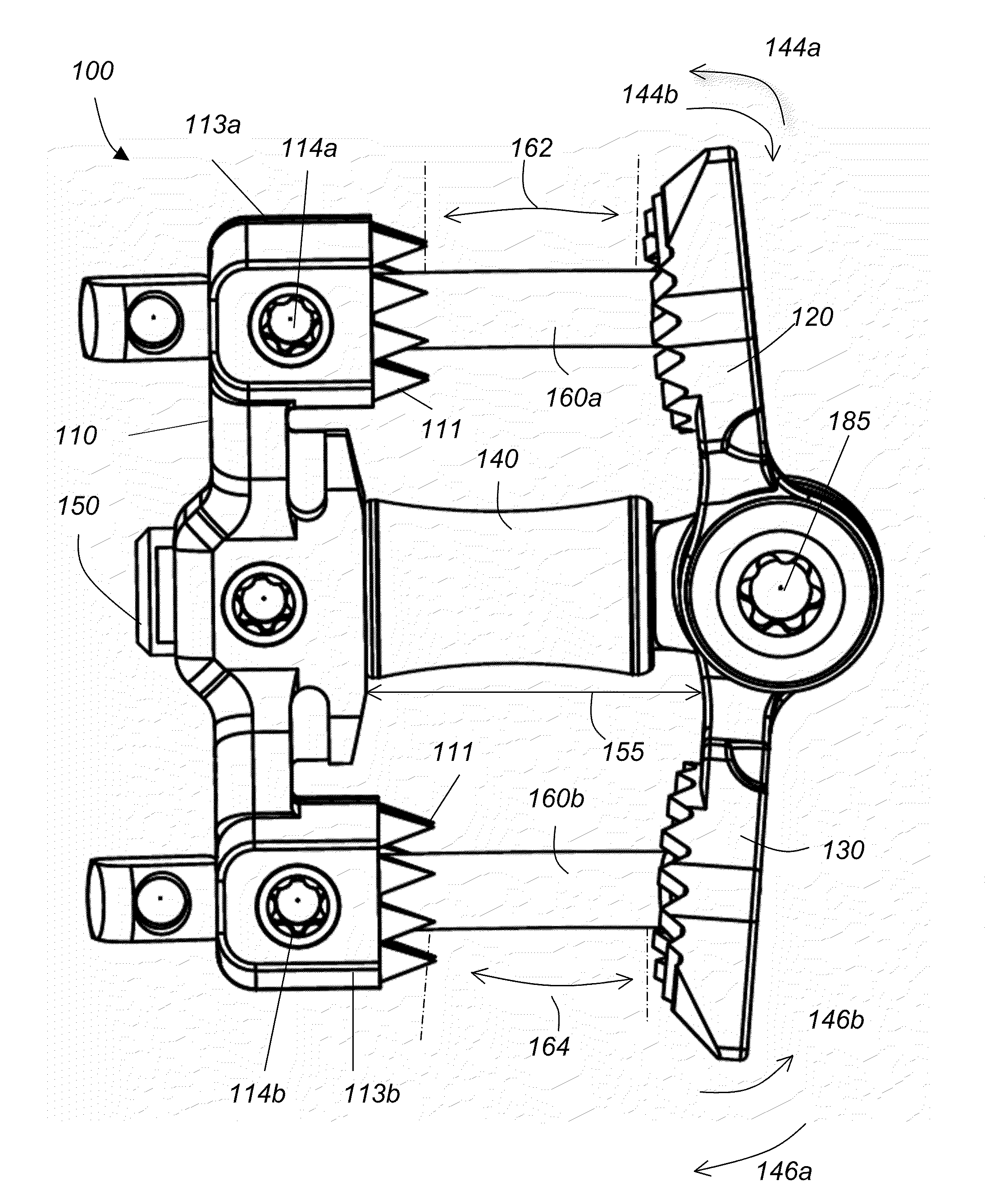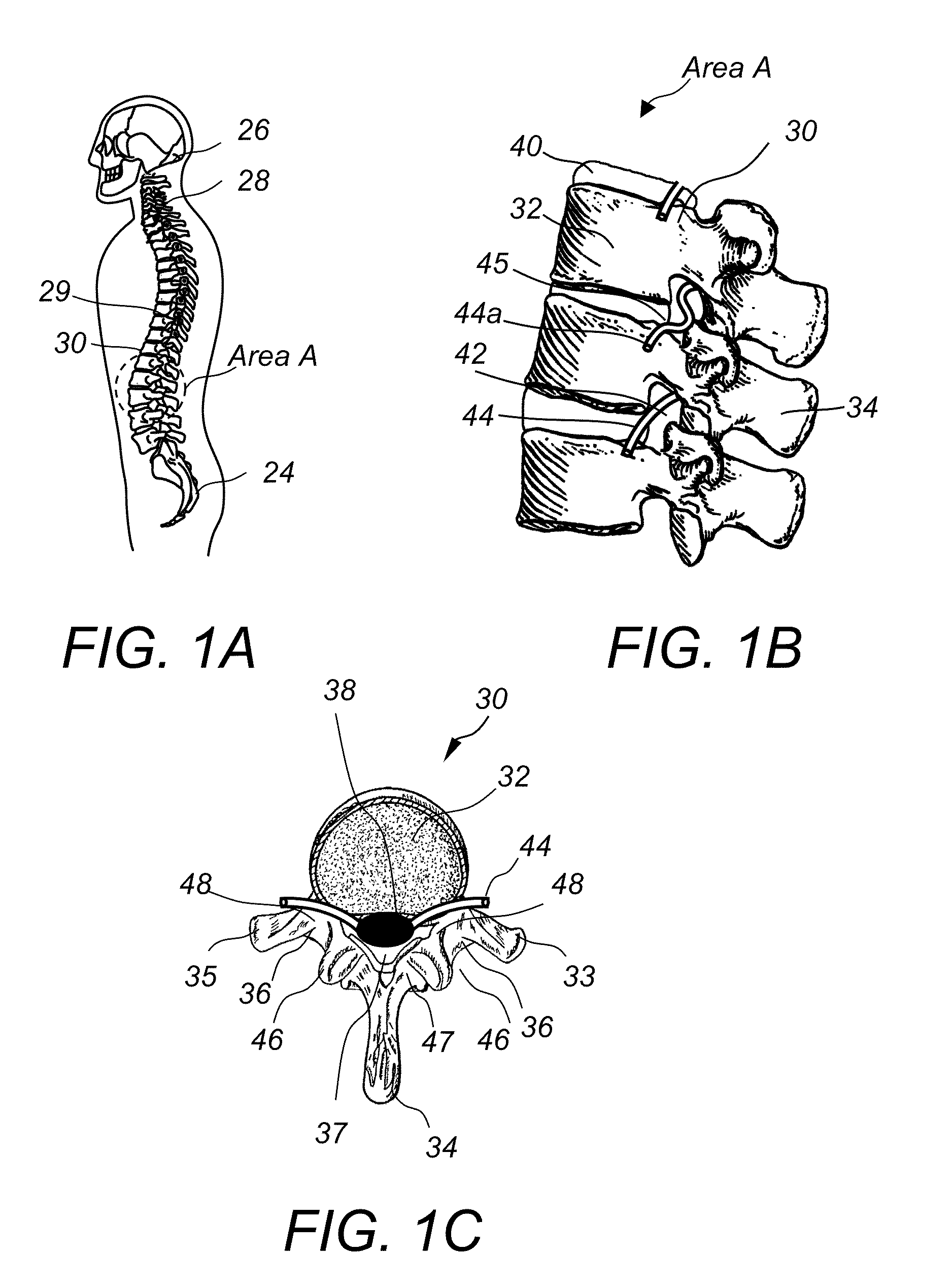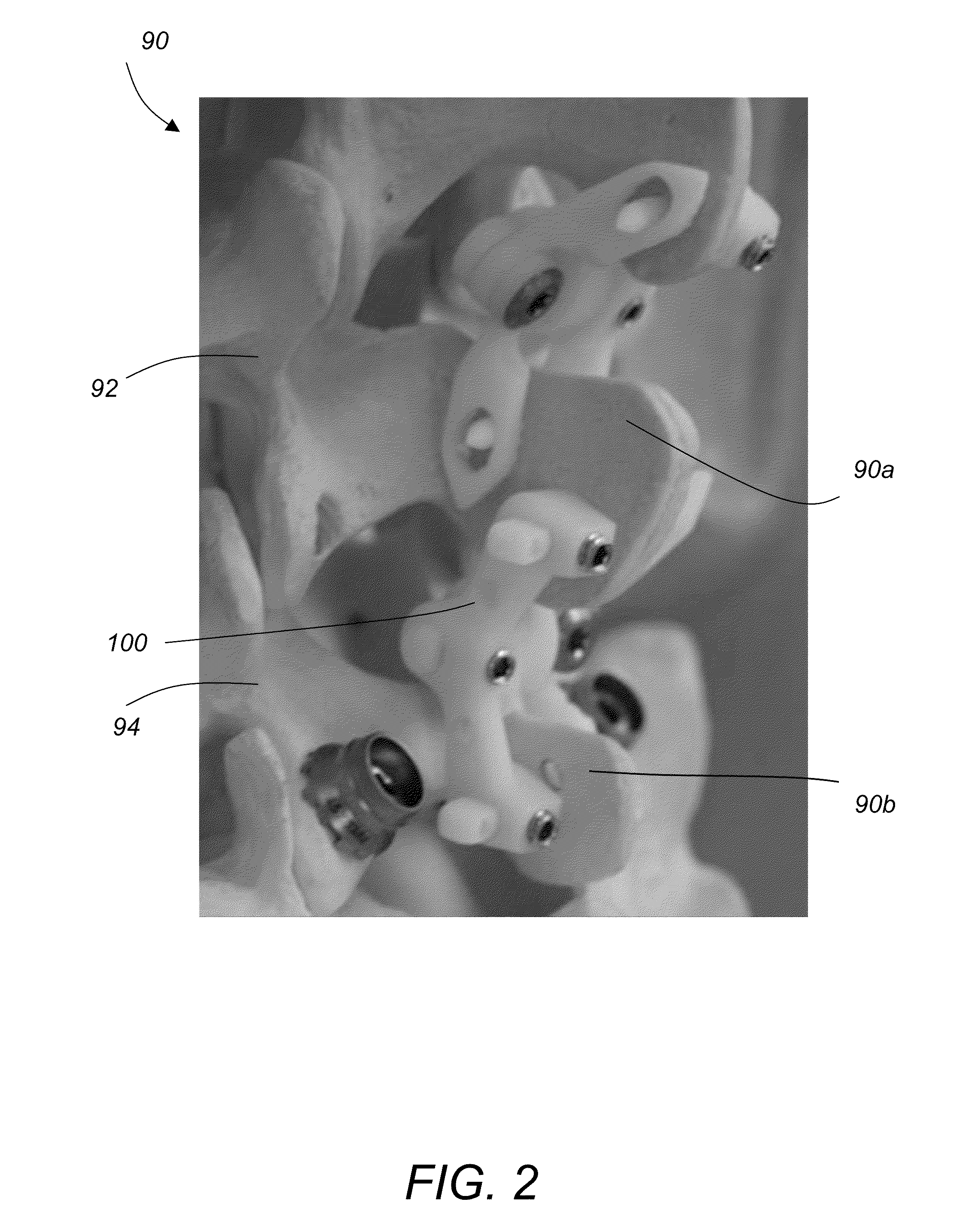Spinous process fixation implant
a technology of spinal cord and fixation system, which is applied in the field of system and method of spinal stabilization through an implant, can solve the problems of increasing the amount of blood loss, difficult to maintain a clear operative field, and the difficulty of extending the rod fixation system to the higher or lower level that needs to be fused, etc., and achieves the effect of stabilizing the vertebrae and promoting bone growth through the devi
- Summary
- Abstract
- Description
- Claims
- Application Information
AI Technical Summary
Benefits of technology
Problems solved by technology
Method used
Image
Examples
Embodiment Construction
[0041]The present invention relates to a system and a method for an improved spinous process fixation implant.
[0042]Referring to FIG. 2, spinous process fixation assembly 100 stabilizes two adjacent vertebras 92, 94 of the human spine by engaging and locking their spinous processes 90a and 90b, respectively. Referring to FIG. 3, spinous process fixation assembly 100 includes an elongate component 110, top and a bottom pivoting wing components 120, 130 and a spacer 140. Top and bottom pivoting wing components 120, 130 are arranged opposite to component 110 at a distance 155 set by the length of spacer 140. Top and bottom pivoting wing components 120, 130 pivot around axis 180 (shown in FIG. 6) independent from each other, forming angles 162, 164 with component 110, respectively. The pivoting motion of components 120, 130 along directions 144a, 144b and 146a, 146b, moves them close to or away from the elongated component 110, as shown in FIG. 3 and results in clamping or unclamping of...
PUM
 Login to View More
Login to View More Abstract
Description
Claims
Application Information
 Login to View More
Login to View More - R&D
- Intellectual Property
- Life Sciences
- Materials
- Tech Scout
- Unparalleled Data Quality
- Higher Quality Content
- 60% Fewer Hallucinations
Browse by: Latest US Patents, China's latest patents, Technical Efficacy Thesaurus, Application Domain, Technology Topic, Popular Technical Reports.
© 2025 PatSnap. All rights reserved.Legal|Privacy policy|Modern Slavery Act Transparency Statement|Sitemap|About US| Contact US: help@patsnap.com



